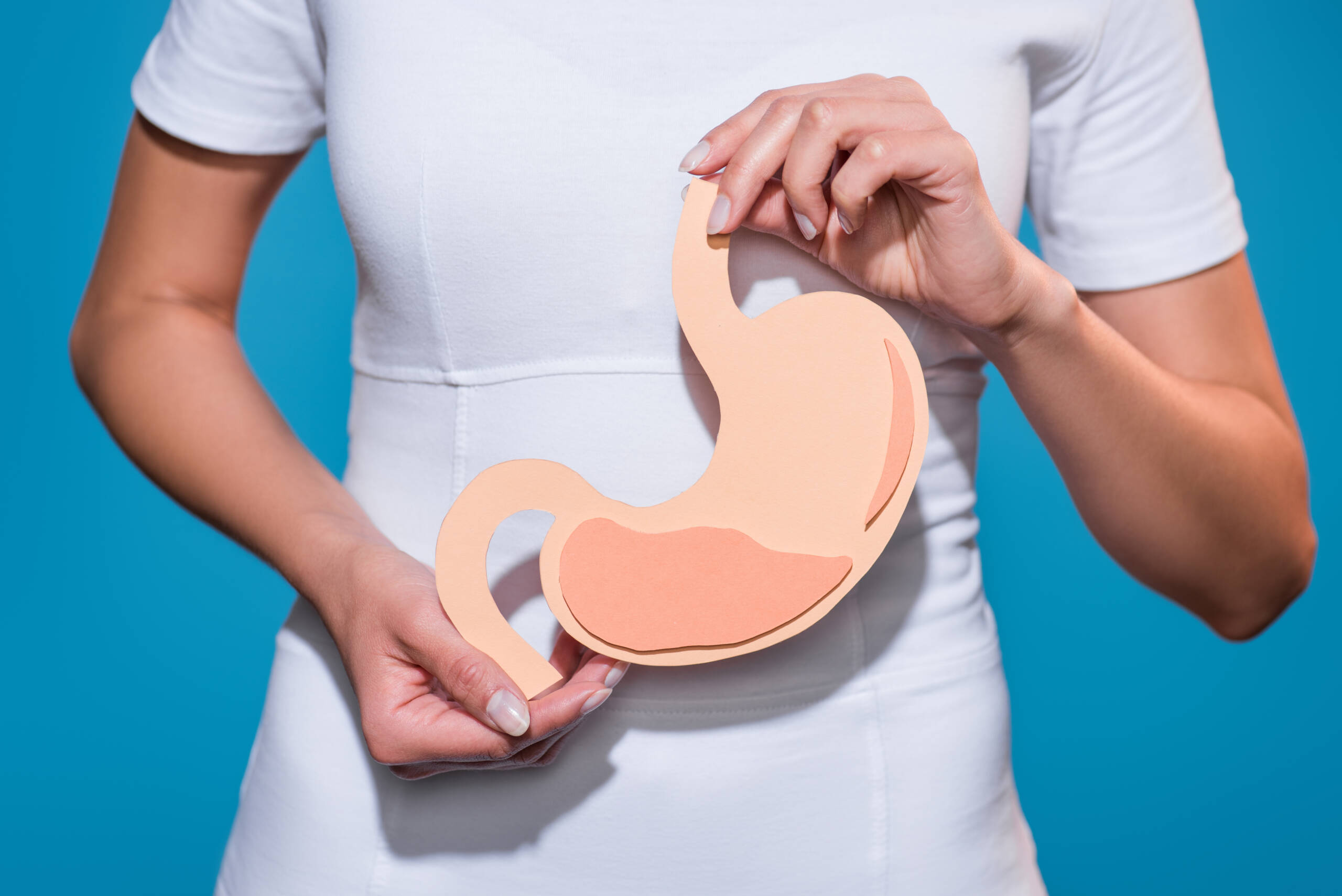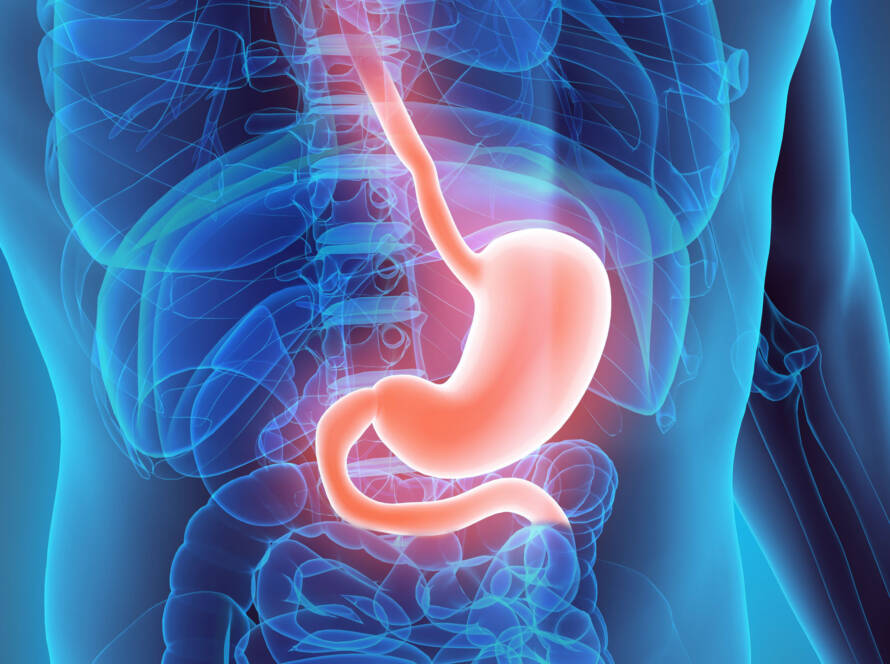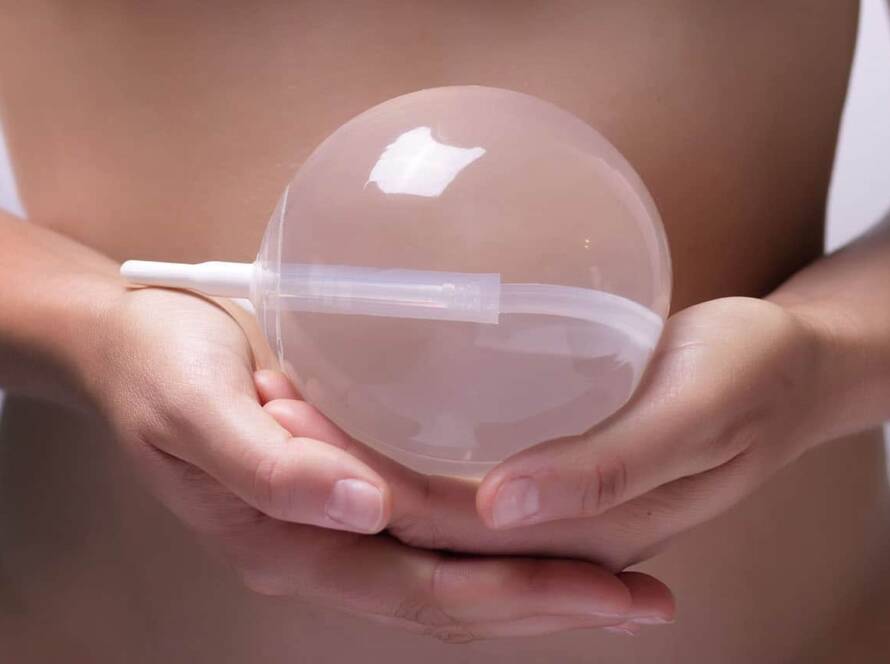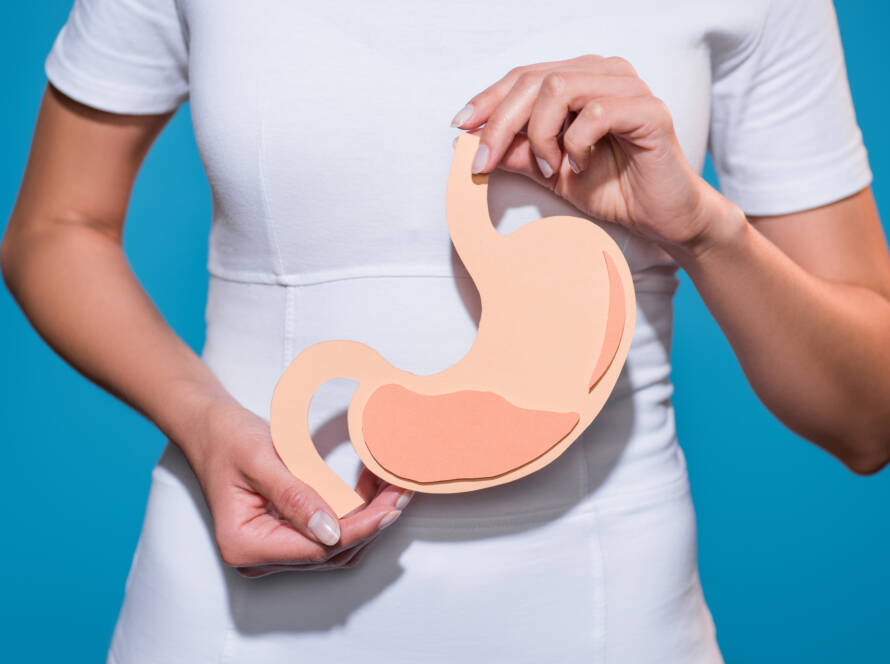G-Tube is the most common surgery performed in the world for obese patients and those who are unable to lose weight. Usually, patients are offered diet and exercise programs before surgery, and sometimes they are supported by medication. However, if the patient cannot lose weight, surgery planning is performed.
With this surgical operation, which is carried out by the procedure of taking approximately 60-90% of the stomach, the patient can achieve the desired weight. The operation can also be performed with ‘sleeve gastrectomy’, i.e. closed technique (laparoscopic), and after a comfortable recovery, patients can return to their daily life.
Let’s first point out that the surgery was performed under general anesthesia. This will never allow the patient to feel pain or pain. Some small lacerations are applied to the patient during the intervention of the cargastrectomy of the sleeve carried out by laparoscopy. Ports are placed from these cutters so that the abdomen can be reached. One of the cutters is used for a micro camera. The camera allows the inside of the abdomen to be displayed and inflated using CO2 gases that do not damage the abdomen’s health.
The oil around the stomach is then separated from tissue, vessels, and spleen using a special tool called ligase. The excess stomach part is cut off and evicted from the body. The excess portion of the stomach during gastric surgery is sewn up with a special device called the stapler and cut at the same time.
Only 80 ml to 150 ml of the stomach remains. Silicone drywall is placed to allow the accumulated fluid to escape and the stomach reduction surgery is completed by suturing the areas where the incision is applied. This surgery has some advantages over gastric bypass surgery. We can sort these benefits as follows:
Approximately 60% of the excess weight is possible in a very short time
The body doesn’t have to adapt to a foreign object
Metabolic disorders are corrected much faster
Rest time is much shorter
There is no need for a change in the food transit route in the stomach-intestinal system
Vitamin and mineral deficiency is much less
There’s more to the appetite
Conditions requiring gastric Reduction
While patients with obesity problems can benefit from the choice of tube stomach surgery, not every patient is a suitable candidate for this surgery. The basic principle of this surgery is that the patient eats less and consequently the body fat is reduced.
With the diet and exercise programs applied, obese patients who can’t lose weight are taking their breath away with the option of weakening surgery, which is the right thing to do. Stomach surgery shouldn’t be considered the first option. The patient must perform some tests before surgery. This will assess whether there is a candidate for surgery and then proceed to the surgery planning phase.
How long will it take to get a G-Tube Surgery?
We can say the surgery was completed in competent hands between half an hour and an hour. This time can be extended up to 2 hours when the patient is included in stages such as preparing for tube stomach surgery, and anesthesia delivery. As soon as the patient is in surgery, he won’t have surgery. There is a preparation time. This time is between half an hour and an hour. When the operating time is over, it is normally taken to the wake-up room in surgery, where the patient stays between half an hour and an hour.
G-Tube Surgery Nutrition Program
Of course, there are some things to be careful about feeding after the tube stomach surgery. In particular, patients do not need to eat because they do not have appetite hormones during surgery for 6 to 18 months. This period should be followed closely by the dietician because people who have eaten for years have no appetite, and with very little food and their days, they are quickly and unbalanced weakening.
To prevent this, we can sort what needs to be done as follows:
More meals must be consumed but the portions must be small
Food must be swallowed after being chewed too much
Exercise and exercise should be performed after surgery
Solid and liquid food should not be consumed together
After a while, the daily must be at least 1.5 liters
A protein-rich diet program must be applied after the operation
Doctor and the vitamin and mineral support recommended by the dietician must be taken Routine checks must never be disrupted
Patients must remain loyal to the nutrition program to achieve their health and ideal weight.
Post G-Tube Surgery Considerations
We can answer the question of what patients should be careful about after intubation surgery with some examples.When discharged, a bath can be made at home
After discharge, it must be moved around the house
After the operation, 1 week of sexual activity must be carried out
The car can be used after discharge
Alcohol must not be taken The next 1 month of the operation should avoid heavy physical activity that forces the body
Vitamin-mineral supplements recommended by the doctor and the dietician must be received in a manner in order
Solarium, activities such as sunbathing should be avoided until the seams melt The most important thing is the nutrition program and never go outside the feeding program
Who Can’t Have G-Tube Surgery?
First, the patient must be above the body mass index of 35 to benefit from an operation on the tube stomach surgery. It is also important that the weight surplus is caused by an exogenic source to benefit from this operation. If there is a weight overweight problem caused by some hormonal disorders, medication should be administered instead of surgery.
Those under the age of 18 may only have surgery after the required approvals have been obtained, those with a health problem that is obstructing surgery cannot benefit from this surgery. And for those over 65 years old, there may be some undoing of the surgery. However, depending on the patient’s health status, flexibility can be shown at the upper age limit. New mothers in labor 3. could have surgery after the month. People with alcohol and drug addiction should also be very careful when performing stomach reduction surgery. Some specific diseases may also prevent this surgery from being performed.
What Are The Risks of G-Tube Surgery?
There is no risk-free surgery. And so, the weakening surgery has some risks in itself. Since anesthesia was administered before surgery, we can talk about various risks associated with anesthesia, such as shortness of breath, infection, malnutrition, blood clot, and vascular congestion. However, the risks of this surgery are far less than the risks of gallbladder surgery.
It is also important to note that if the surgery is performed by an experienced physician, the risk may be much lower. And one of the risks that can occur after a tube stomach surgery is the abdominal seepage from the rest of the stomach.
At the same time, in very rare cases, stomach shortness complications can occur in the long term. However, with the endoscopic expansion application, this problem is easily eliminated. The risks associated with surgery are always transferred to the patient prior to the operation, and operations are carried out within the patient’s knowledge and approval.
Risk of Leakage After G-Tube Surgery
The most important thing that patients focus on before intubation surgery is risk of leakage. This is stomach acid and stomach contents seeping from the stomach into the abdomen. This can cause abdominal infection. The period in which leakage complications are frequently seen is between 5 and 8 days after surgery. After 10 days of the operation, the risk of leaks is now extremely reduced. The signs of leakage are as follows:
High fever
Abdominal pain
Respiratory distress
Of course, these problems can also be caused by a different disease, other than the surgical intervention involved. However, you should inform your doctor even when only 1 of these 3 symptom is experienced. If leaks are detected during the checks carried out, the necessary operation is carried out immediately. This intervention is sometimes surgical and sometimes non-surgical.
With this surgical operation, which is carried out by the procedure of taking approximately 60-90% of the stomach, the patient can achieve the desired weight. The operation can also be performed with ‘sleeve gastrectomy’, i.e. closed technique (laparoscopic), and after a comfortable recovery, patients can return to their daily life.
Let’s first point out that the surgery was performed under general anesthesia. This will never allow the patient to feel pain or pain. Some small lacerations are applied to the patient during the intervention of the cargastrectomy of the sleeve carried out by laparoscopy. Ports are placed from these cutters so that the abdomen can be reached. One of the cutters is used for a micro camera. The camera allows the inside of the abdomen to be displayed and inflated using CO2 gases that do not damage the abdomen’s health.
The oil around the stomach is then separated from tissue, vessels, and spleen using a special tool called ligase. The excess stomach part is cut off and evicted from the body. The excess portion of the stomach during gastric surgery is sewn up with a special device called the stapler and cut at the same time.
Only 80 ml to 150 ml of the stomach remains. Silicone drywall is placed to allow the accumulated fluid to escape and the stomach reduction surgery is completed by suturing the areas where the incision is applied. This surgery has some advantages over gastric bypass surgery. We can sort these benefits as follows:
Approximately 60% of the excess weight is possible in a very short time
The body doesn’t have to adapt to a foreign object
Metabolic disorders are corrected much faster
Rest time is much shorter
There is no need for a change in the food transit route in the stomach-intestinal system
Vitamin and mineral deficiency is much less
There’s more to the appetite
Conditions requiring gastric Reduction
While patients with obesity problems can benefit from the choice of tube stomach surgery, not every patient is a suitable candidate for this surgery. The basic principle of this surgery is that the patient eats less and consequently the body fat is reduced.
With the diet and exercise programs applied, obese patients who can’t lose weight are taking their breath away with the option of weakening surgery, which is the right thing to do. Stomach surgery shouldn’t be considered the first option. The patient must perform some tests before surgery. This will assess whether there is a candidate for surgery and then proceed to the surgery planning phase.
How long will it take to get a G-Tube Surgery?
We can say the surgery was completed in competent hands between half an hour and an hour. This time can be extended up to 2 hours when the patient is included in stages such as preparing for tube stomach surgery, and anesthesia delivery. As soon as the patient is in surgery, he won’t have surgery. There is a preparation time. This time is between half an hour and an hour. When the operating time is over, it is normally taken to the wake-up room in surgery, where the patient stays between half an hour and an hour.
G-Tube Surgery Nutrition Program
Of course, there are some things to be careful about feeding after the tube stomach surgery. In particular, patients do not need to eat because they do not have appetite hormones during surgery for 6 to 18 months. This period should be followed closely by the dietician because people who have eaten for years have no appetite, and with very little food and their days, they are quickly and unbalanced weakening.
To prevent this, we can sort what needs to be done as follows:
More meals must be consumed but the portions must be small
Food must be swallowed after being chewed too much
Exercise and exercise should be performed after surgery
Solid and liquid food should not be consumed together
After a while, the daily must be at least 1.5 liters
A protein-rich diet program must be applied after the operation
Doctor and the vitamin and mineral support recommended by the dietician must be taken Routine checks must never be disrupted
Patients must remain loyal to the nutrition program to achieve their health and ideal weight.
Post G-Tube Surgery Considerations
We can answer the question of what patients should be careful about after intubation surgery with some examples.When discharged, a bath can be made at home
After discharge, it must be moved around the house
After the operation, 1 week of sexual activity must be carried out
The car can be used after discharge
Alcohol must not be taken The next 1 month of the operation should avoid heavy physical activity that forces the body
Vitamin-mineral supplements recommended by the doctor and the dietician must be received in a manner in order
Solarium, activities such as sunbathing should be avoided until the seams melt The most important thing is the nutrition program and never go outside the feeding program
Who Can’t Have G-Tube Surgery?
First, the patient must be above the body mass index of 35 to benefit from an operation on the tube stomach surgery. It is also important that the weight surplus is caused by an exogenic source to benefit from this operation. If there is a weight overweight problem caused by some hormonal disorders, medication should be administered instead of surgery.
Those under the age of 18 may only have surgery after the required approvals have been obtained, those with a health problem that is obstructing surgery cannot benefit from this surgery. And for those over 65 years old, there may be some undoing of the surgery. However, depending on the patient’s health status, flexibility can be shown at the upper age limit. New mothers in labor 3. could have surgery after the month. People with alcohol and drug addiction should also be very careful when performing stomach reduction surgery. Some specific diseases may also prevent this surgery from being performed.
What Are The Risks of G-Tube Surgery?
There is no risk-free surgery. And so, the weakening surgery has some risks in itself. Since anesthesia was administered before surgery, we can talk about various risks associated with anesthesia, such as shortness of breath, infection, malnutrition, blood clot, and vascular congestion. However, the risks of this surgery are far less than the risks of gallbladder surgery.
It is also important to note that if the surgery is performed by an experienced physician, the risk may be much lower. And one of the risks that can occur after a tube stomach surgery is the abdominal seepage from the rest of the stomach.
At the same time, in very rare cases, stomach shortness complications can occur in the long term. However, with the endoscopic expansion application, this problem is easily eliminated. The risks associated with surgery are always transferred to the patient prior to the operation, and operations are carried out within the patient’s knowledge and approval.
Risk of Leakage After G-Tube Surgery
The most important thing that patients focus on before intubation surgery is risk of leakage. This is stomach acid and stomach contents seeping from the stomach into the abdomen. This can cause abdominal infection. The period in which leakage complications are frequently seen is between 5 and 8 days after surgery. After 10 days of the operation, the risk of leaks is now extremely reduced. The signs of leakage are as follows:
High fever
Abdominal pain
Respiratory distress
Of course, these problems can also be caused by a different disease, other than the surgical intervention involved. However, you should inform your doctor even when only 1 of these 3 symptom is experienced. If leaks are detected during the checks carried out, the necessary operation is carried out immediately. This intervention is sometimes surgical and sometimes non-surgical.
There are now non-surgical methods to get rid of the weight that has become a “big problem” for both esthetic and health. The recommended gastric bypass surgery, as an alternative…
In recent years, the gastric balloon has been raised much more with the increasing obesity problem. Especially those who aren’t too hot for surgery to get rid of the obesity…
G-Tube is the most common surgery performed in the world for obese patients and those who are unable to lose weight. Usually, patients are offered diet and exercise programs before…





